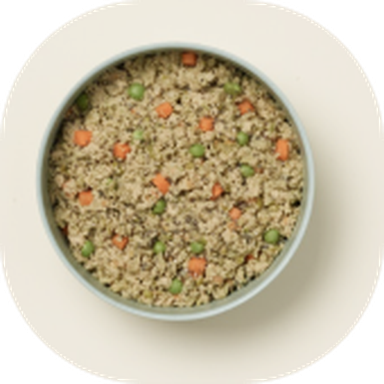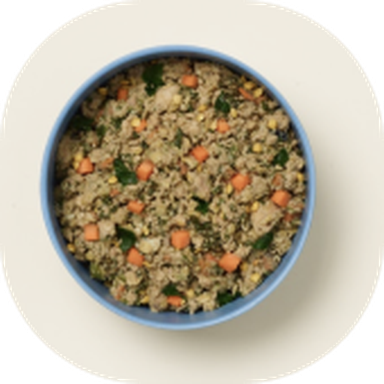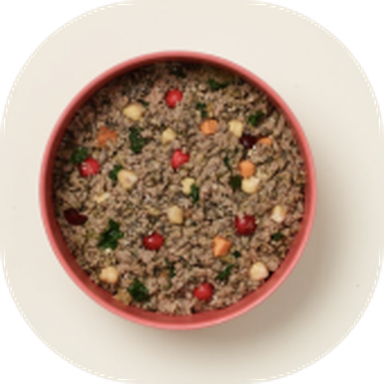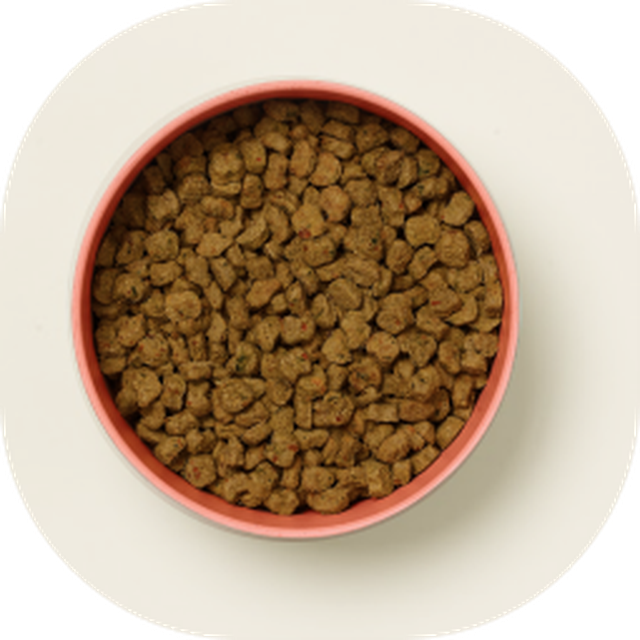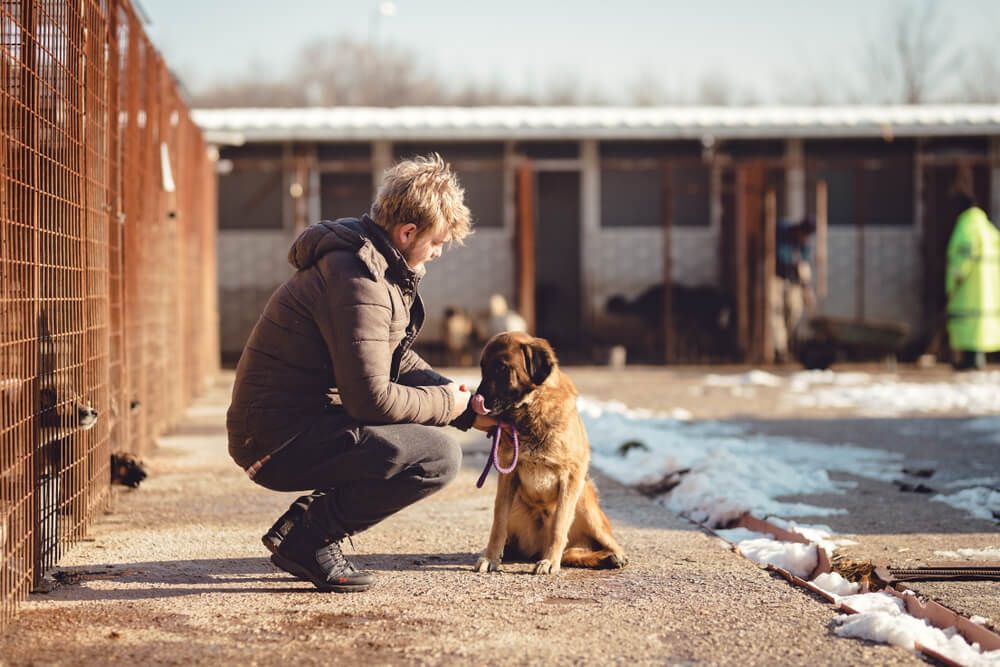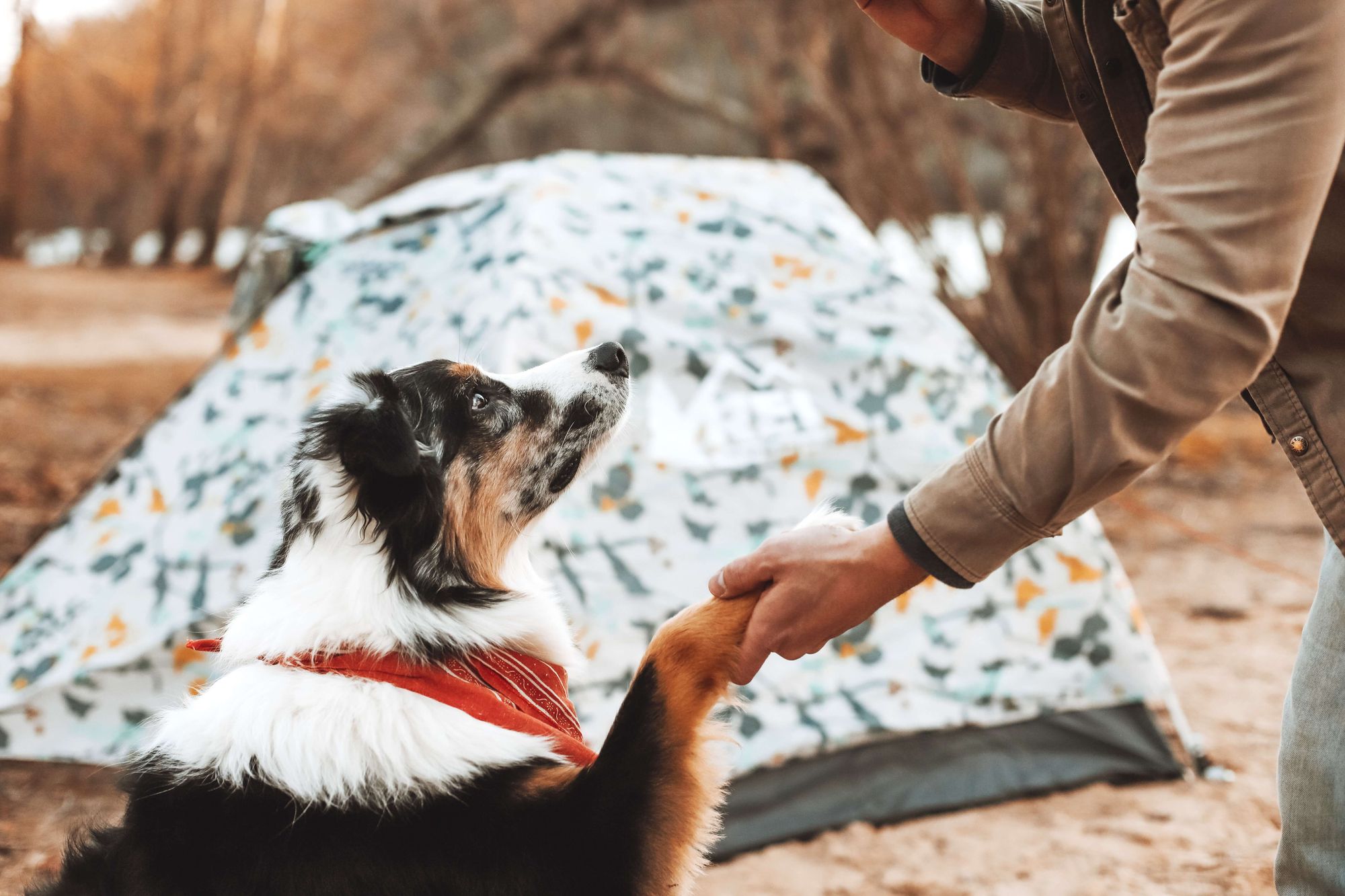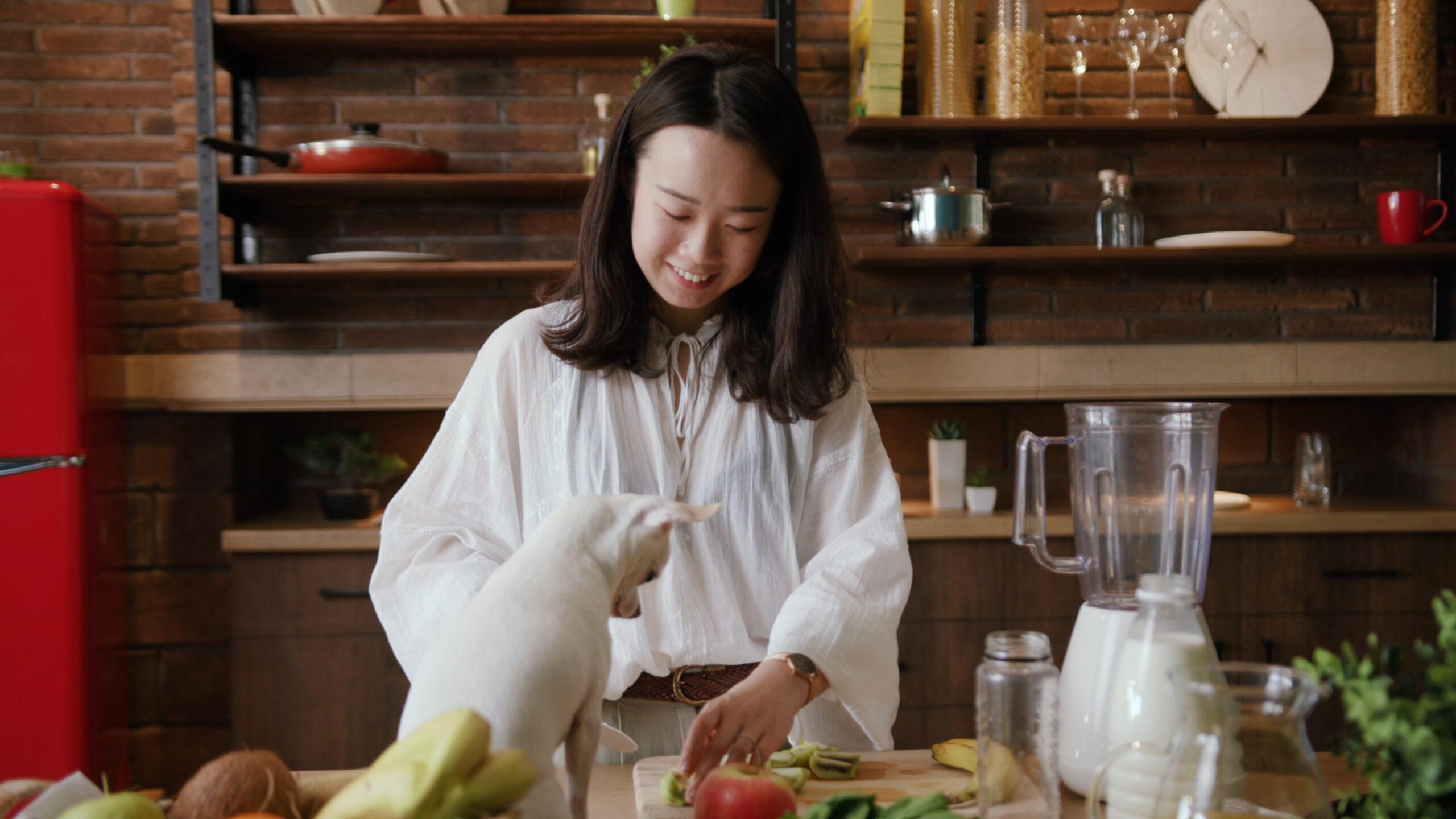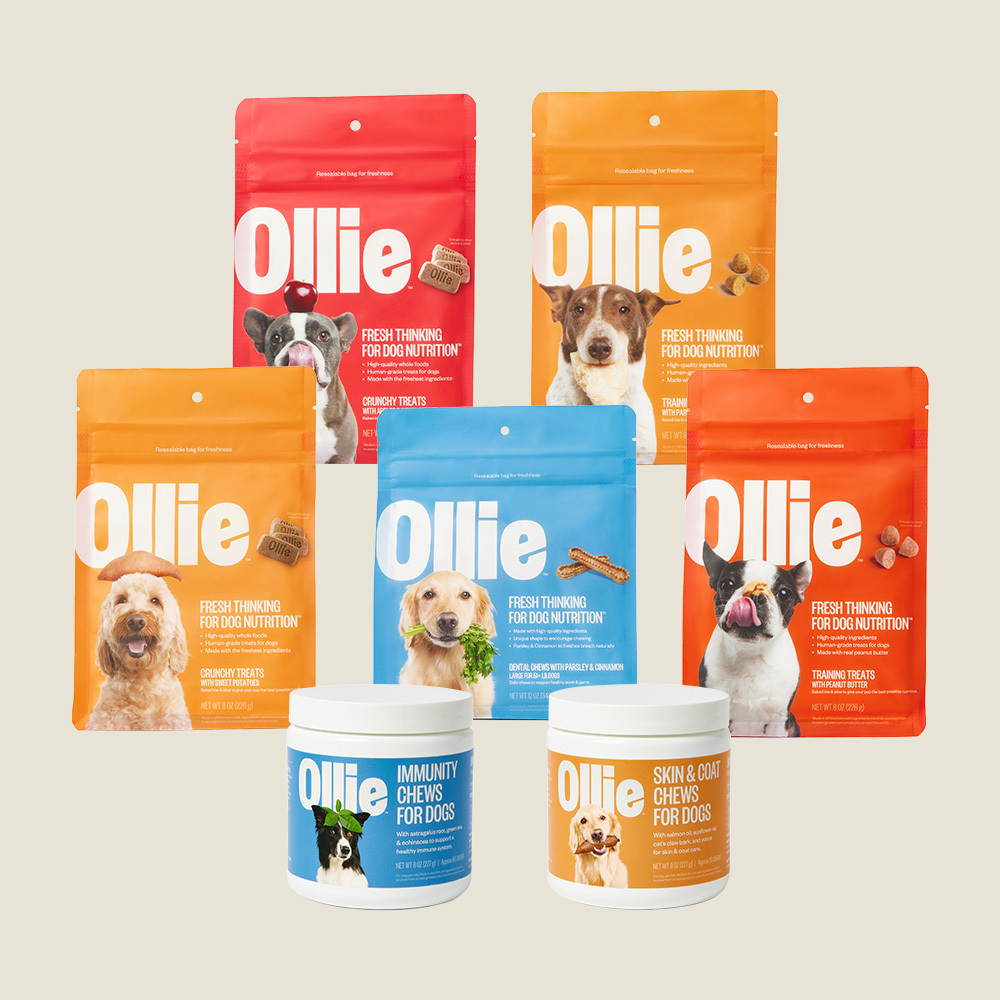Hey Ollie blog readers! We’re offering you an exclusive 60% OFF your starter box! Try now!
When you bring a pup home from the shelter you have a lot to think about. Things like showing them the ropes, getting them to the vet, and helping them generally settle in. You may have already decided that you want to feed your dog fresh food. With many benefits and high-quality nutrition, you feel that this will help your dog lead a long and healthy life.
Dogs who spent a long time in the shelter may be used to commercial kibble and some high-value (but not necessarily nutritious) treats. And coming out of weeks or months of living in a busy and stressful shelter, you may do a number on their digestive system if you transition too quickly to a new (and dramatically different) diet. So how can you get your shelter dog to eat high-quality fresh food? We’ve put together our best tips and tricks to help make the switch (and protect your floors).

1. Find out what (and when) your dog was eating at the shelter
Making too many changes too quickly can be overwhelming for anyone, especially a dog who has moved into a new home with all new people and a new schedule. Start by chatting with the shelter about what they were feeding your dog and when. For the first few days you have your dog, consider keeping them on the same food and schedule and allow them to acclimate to your home.
2. Start slowly
When you’re ready to start making the switch, do it very slowly. Start with at least 75% of their current food and no more than 25% of a portion of the new food. Depending on what they were eating the serving sizes for each food may not be equal but the idea is to give them more of what they’re used to. See how this goes for a few days. Every few days give less of the old food and more of the new food until your dog is eating just the new food. This process could take a few weeks depending on how the transition goes.
3. Watch for signs of digestive distress
Your dog can’t tell you if they like the new food or if their stomach is upset but they can show you. If your dog isn’t really eating the new food or is having some loose stool or vomiting that can signal an issue. You will have to play detective to determine if the issue is actually the new food or just that you’re transitioning too fast. Try scaling back on the new food to see if the issues resolve.
4. Be patient but consistent
Your pup may not like all of the change all at once so be patient but consistent. Continue to offer the new food and work towards getting your dog to eat at mealtimes. If you keep going back to the old food, your dog may never adjust.
5. Check in with your vet
If the transition process isn’t going as smoothly as you hoped or your dog is showing any signs of digestive distress, don’t hesitate to enlist some help from your vet. Everything from the stress of your dog’s time in the shelter to the ingredients in the food can play a role in causing these issues. Your vet can help you determine what is what and create a plan to support your pup.
At Ollie, we’re here to support rescue pup parents every step of the way. From customizing our meal plans to choosing from our recipes we can help you (and your pup) find the best plan. If you know your pup has a bit of a sensitive stomach, to begin with, consider starting with our Chicken recipe. With ingredients like gently cooked chicken, carrots and blueberries it has everything your pup needs while being gentle on their stomach. If you have any questions or concerns along the way, our canine support team is just a phone call or email away.
The Ollie blog is devoted to helping pet parents lead healthier lives with their pups. If you want to learn more about our fresh, human-grade food, check out MyOllie.com.
Tagged As:

The nutrition your dog needs,
the food they want.

Enjoying our articles? Subscribe our Newsletters and get new articles directly to your inbox
You might also like
20 June 2024
6 MINS READ
When to Switch Your Puppy to Adult Dog Food
Your puppy’s life is filled with milestones, including the transition from puppy to adult dog food. We explore when to make the switch and provide helpful tips.
by Ollie Pets
11 October 2023
5 MINS READ
Risks of Home Cooking for Your Dog
Although home cooking for your pup sounds like an intuitive and heartwarming way to serve up optimal health through fresh whole ingredients, there are many things you need to know about homemade f…
26 September 2023
7 MINS READ
How to Choose The Perfect Treat for Your Dog
Treats have a place on your dog’s food pyramid, but they should be given with care and consideration.

